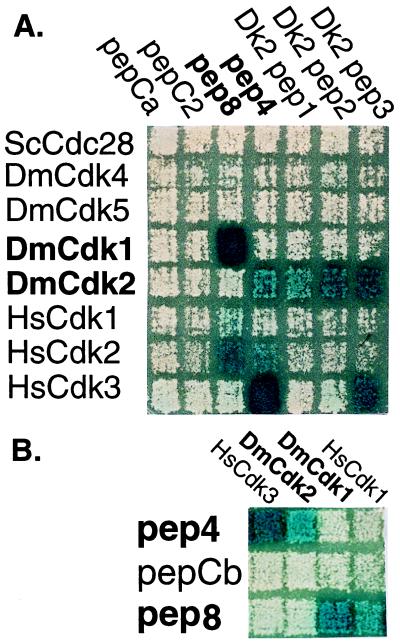Figure 1.
Specificity of Cdk aptamers in yeast two-hybrid assays. Interaction corresponds to 5-bromo-4-chloro-3-indolyl β-d-thiogalactoside staining (blue) in response to expression of the lacZ reporter. Strains expressing the indicated LexA-fused baits in rows were mated with strains expressing the indicated activation domain-fused preys in columns as described (16). (A) Activation domain-tagged trxA-peps isolated in a hunt for DmCdk2 interactors (Dk2pep1, Dk2pep2, and Dk2pep3), trxA-peps [pep4, pep8, and pepC2 (3)], or a control trxA-pep (pepCa) were tested for interaction with LexA-fused yeast Cdc28 (ScCdc28), human Cdks (HsCdk1, HsCdk2, and HsCdk3), and Drosophila Cdks (DmCdk1, DmCdk2, DmCdk4, and DmCdk5). (B) The indicated activation domain-tagged Cdks were tested for interaction with LexA-fused trxA-pep4 (pep4), trxA-pep8 (pep8), or a control trxA-pep (pepCb). The DmCdk2 and DmCdk1 preys were isolated with the pep4 and pep8 baits in the respective yeast two-hybrid hunts from a Drosophila embryo cDNA library.

